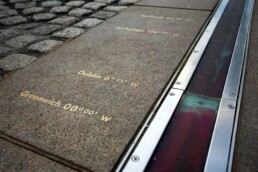Sir Arthur Conan Doyle, whose name is linked with Sherlock Holmes’ deerstalker hat and piercing look, is a literary giant whose influence reaches far beyond detective fiction. While the adventures of the world’s most renowned detective have cemented his place in popular culture, Doyle’s life and work show a complex figure – a medical doctor, a social justice advocate, and a man who is constantly torn between the borders of science and the supernatural.
Doyle was born in Edinburgh, Scotland, in 1859, and his early life was characterised by both privation and intellectual curiosity. Despite coming from a financially struggling household, Doyle excelled in his studies and went on to pursue a medical career. During his university years, he improved his writing talents, creating short stories that demonstrated his growing knack for observation and reasoning.
In 1887, the world met Sherlock Holmes for the first time in “A Study in Scarlet.” Inspired by a sharp-witted professor recognised for his strong observation skills, Doyle created a figure who transformed detective fiction.Holmes, with his painstaking deductions and unshakable logic, set the standard for innumerable fictional sleuths to follow.
The 221B The fictional Baker Street, where Sherlock Holmes lived in Arthur Conan Doyle’s novels, is now a famous monument in its own right. Actually, Baker Street is a very important thoroughfare in the West End of London. Baker Street was a chic neighbourhood in the late 1800s, when Doyle wrote his stories.
Doyle probably had a few motives for choosing the particular address, 221B. Since Baker Street numbers could only go up to the 100s when this was in use, 221B made sure that the address wouldn’t actually be used for fan mail. Also, being located in a major, affluent area gave Holmes easy access to all the places where his investigations took place and was a reflection of his professional success.
As a whole, detective fiction and Sherlock Holmes have become associated with the made-up Baker Street. Tourists love to visit the Sherlock Holmes Museum at 221B Baker Street because it puts them in Doyle’s world. The connection between Baker Street and Sherlock Holmes has cemented its position in literary annals.
Doyle’s legacy, however, extends beyond 221B Baker Street. He was a prolific writer who expanded beyond detective fiction to write historical books like “Micah Clarke” that addressed themes of loyalty and heroism. He also experimented with science fiction, creating the daring Professor Challenger and his exciting experiences with a forgotten realm in “The Lost World.” Doyle’s work defied category, demonstrating his versatility as a writer and his keen interest in the world around him.
Fun Fact: Doyle was not just interested in writing about athletics; he also participated in it! He was a great enthusiast for physical health and even played professional cricket for a short time!
Doyle’s preoccupation with the paranormal, which contrasts sharply with Sherlock Holmes’ rational world, is another intriguing aspect of his life. He became an outspoken supporter of spiritualism, a religious system that promotes communication with the dead.While this quest harmed his image in some academic circles, it also highlighted the intricacy and intellectual curiosity that motivated him. Doyle’s desire to investigate the inexplicable, even in the face of scepticism, reveals a man unafraid to defy tradition.
Sir Arthur Conan Doyle died in 1930, leaving behind a literary treasure trove. His abiding legacy is the various Sherlock Holmes adaptations that continue to captivate audiences across the world. Beyond Baker Street, Doyle’s impact on detective fiction, historical fiction, science fiction, and even social debate through his crusade for justice reinforces his status as a great literary pioneer. His life and work demonstrate the force of inquiry, the value of pushing limits, and the lasting impact that a well-crafted story can have.



